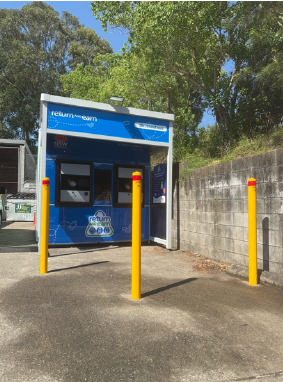As home renovators grapple with higher building costs, they’re being urged not to cut corners with asbestos, as the nation sits high on the global chart of asbestos-related deaths.
The reminder from the Asbestos Safety and Eradication Agency comes on National Asbestos Awareness Week (20-26 November), ahead of the 20th anniversary of Australia banning the use of the deadly material.
About 4,000 Australians die each year from mesothelioma and other asbestos-related diseases - that’s about three times the national road toll.
Chair of the Asbestos Safety and Eradication Council, Paul Bastian, said while many of these deaths relate to occupational exposures before the ban was introduced, the risks are far from over.
“Asbestos still exists in millions of buildings and structures across Australia, including in one in three homes. Asbestos materials are now ageing and degrading, increasing the risk of releasing deadly asbestos fibres. More frequent extreme weather events such as floods and fires are also increasing the risk of asbestos exposure and contamination of the environment,” Mr Bastian said.
“Australia is paying a devastating price for our past use of asbestos, having one of the highest death rates of asbestos-related diseases in the world. While many of these deaths relate to workplace exposures before the ban, there is a concern that a growing number of DIY renovators are next in line for exposure and disease. We often hear about renovators discovering asbestos after starting a project, which means they may already have exposed themselves, their family, and their neighbours, as well as then having to deal with unexpected delays and costs.
“We need to continue eliminating asbestos-related disease by building on the success of the past two decades. Since the ban, Australia has made significant progress through strengthened laws and public awareness campaigns, yet many people still don’t know where asbestos can be found because it’s hard to identify it just by looking. Asbestos was used in thousands of building products including vinyl floor tiles, adhesives, paints, electrical components, insulation, textured coatings, and window putty.
“We’re calling on tradies, homeowners, and anyone planning renovations, repairs, or other work on older buildings to think twice about asbestos and don’t cut corners. Know where asbestos is before starting work and don’t touch it if you don’t have the training and equipment to remove it safely - use a licensed asbestos professional instead. Just like plumbing and electrical work, asbestos removal is a job best left to the experts.
“Our agency is working closely with all governments to implement the next phase of the Asbestos National Strategic Plan by focusing on strategies that promote the safe prioritised removal and disposal of all remaining asbestos materials.
“We have done so much as a nation to prevent asbestos exposure, but the job isn’t over. Together, we can stop a new wave of suffering and wipe out asbestos-related diseases in Australia. Once asbestos is safely removed, it’s gone for good.”
Media contacts:
Sofie Wainwright: 0403 920 301
Tim Brunero: 0405 285 547


